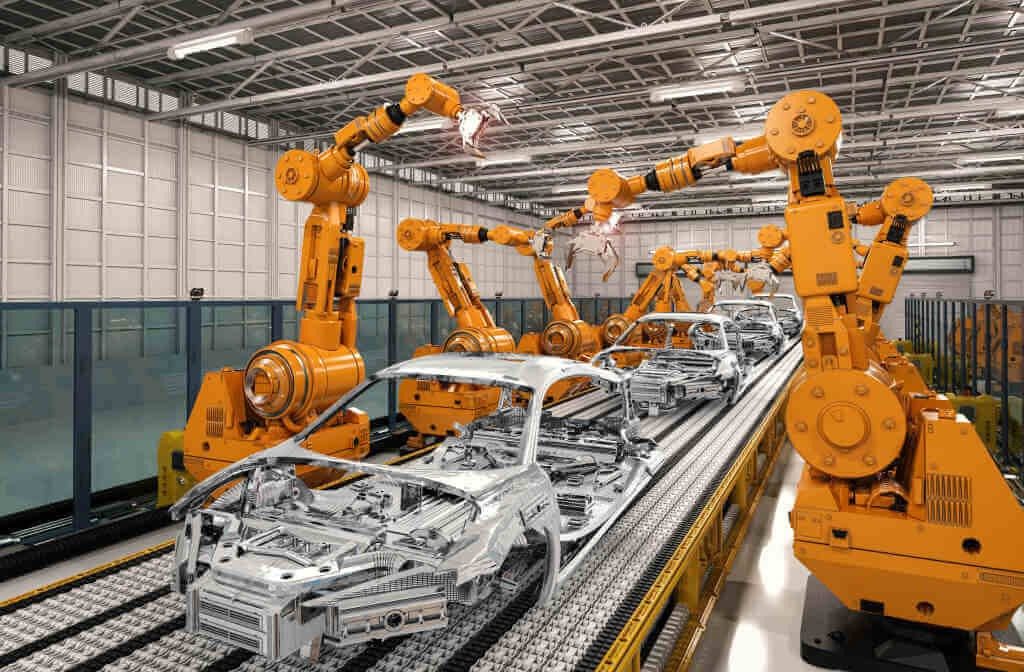The manufacturing industry has been, by far, one of the primary users of industrial robots. Industrial robots are usually automated and programmed to perform various tasks in the manufacturing industry. These robots typically move along three or more axes in their operation.
Industrial robots have many advantages, such as improved productivity, reduced labor costs, reduced waste material, accuracy and precision, and general improved workplace safety. These benefits have led many manufacturing companies to incorporate the use of robots in their production processes.
In this article, we will tell you about the different types of industrial robots that are available in the market. We will also look at some of the areas whereby the use of robots can be applied in manufacturing processes.
Types of Industrial Robots
There are six main types of industrial robots, namely;
Articulated robots;
they are the most common industrial robots. They resemble the human hand and are commonly referred to as industrial robotic arm robots.
Cartesian coordinate robots: They are also known as rectilinear or gantry robots. These robots usually have three prismatic joints, which they use for the movement of the tool. They also have three rotary joints for their positioning in space.
Cylindrical-coordinate robots:
They are usually characterized by their rotary joints at the base. They also have at least one prismatic joint that connects it to its links.
Spherical coordinate robots: These are the first robots that were used in industrial applications. They only have rotary joints and were mainly used for machine tending, welding, and plastic injection.
SCARA robots:
These types of robots are usually used to perform tasks that require accurate lateral motions.
Delta robots: Also referred to as parallel link robots, delta robots usually have parallel links connected to a common base. They are commonly used for tasks such as pick-and-place.
Applications of Industrial Robots in the Manufacturing Processes
Pick, Packing and Palletizing
One of the major applications of industrial robots is in the processes of picking, packing, and palletizing. Most products usually require multiple handling during the production process before they are dispatched to their final destination.
By incorporating industrial robots, the tasks of picking, packing, and palletizing is performed with increased speed while maintaining accuracy and consistency. This, in turn, leads to lower production costs.
Machine Tending
Machine tending involves the process of loading and unloading raw materials. The raw material is loaded into machinery awaiting processing. Industrial robots have been used to perform this task as it can be dangerous to human employees.
Arc Welding
Industrial robots can also be used to perform arc welding tasks. These tasks can be dangerous to workers as they can get arc burns or inhale hazardous fumes.Do check Home Cares for more information.
Materials Handling
Materials handling involves moving, packing, and selection of products. These tasks can be handled well by material handling robots. The robots can also be automated to perform tasks such as transferring product parts from one equipment to the other.
Assembling
In automotive industries, assembling smaller components such as pumps and motors can be tedious. Robots can be used to assemble these parts at high speeds and precision. They can also be used to perform tasks such as wheel mounting and windshield installation.
Painting
Today, it is an uphill task to find a professional painter. Maybe the reason why professional painters are rare is that painting is a toxic job. Inhaling of paint fumes can be dangerous to a person’s health. As such, robots are perfect for this type of job. Their ability to maintain consistency will also ensure that the area is painted consistently.
The industrial robot’s accuracy and precision will also save you lots of money as there will be a reduced amount of wasted paint.
Conclusion
There is no denying that robotic applications are the thing of the future. Knowing the different types of robots available in the market and knowing how they can be applied in your manufacturing processes is essential.
Before settling for any one particular industrial robot, consider the processes that your products go through and then decide on one that meets your requirements.
